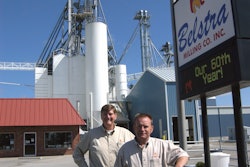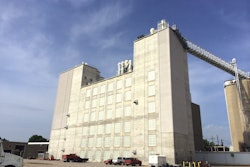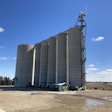Two Rivers Cooperative’s general manager, Tracy Gathman is quick to reference the wisdom passed on from agribusinessmen who came before him, specifically his father who spent more than 40 years working [at or for?] a cooperative, and, in this instance, dairyman and long-time cooperative supporter, Nelson Gardner: “Cooperatives have to remember what they started out for: the purpose of a farmer cooperative is to enhance members’ income—and they should keep that at the top of their priorities list.”
Abiding by the truth of this statement has posed some unique challenges for the cooperative this past year. The source of this contention was rooted in the cooperative’s decision to pursue an investment that would benefit its producer members, but conflicted with the emotions and perceptions of the local community.
The folks at Two Rivers Cooperative opened up about their experience and offer some advice to businesses looking to expand their operations.
Growing demand requires action
Two Rivers Cooperative was formed in 2001 as the result of a merger between two cooperatives, Ottley/Monroe Co-op and Farmers Co-op of Pella, both with roots in Mahaska County since 1920. The cooperative provides grain marketing, feed production, agronomy and petroleum services to its 520 producer owners – and 550 propane accounts – in southern Iowa from four locations, Monroe, Otley, Pella and Tracy.
For the last 35 years, the original Tracy operation was little more than a store front housed in an old lumber yard downtown; however, as the cooperative noticed a significant amount of grain coming into the Pella location from the Tracy area, it began considering building a new facility in the unincorporated community, population 200.
“As we monitored the grain being brought into Pella, we looked at our existing storage facilities and it became obvious that we needed to expand our storage capacity,” Gathman says. “Pella was landlocked in a rather urban area; our only option was to start a new project.”
Upper management had been eyeing various locations near Tracy for five years, but none quiet met their qualifications. As you go north out of Tracy, you run in to the river bottom and most of the area goes under water the making it difficult to find a proper location and the cost of delivering electrical services ruled out some of the sites.
In October 2010, opportunity arose when a XXX-acre farm was about to became available at an estate auction. The board of directors came out to walk the site and, after the review of the flood zone (the 500 year flood zone ends about 200 feet behind the prime parcel), the co-op purchased it.
The property was split, selling the farm and keeping xx-acres for the cooperative. Shortly after, the co-op hired Craig Hatland, knowing management of this project was going to require full-time oversight.
While a practical decision for the cooperative, as people began to hear what it was doing, the project hit a few snags.
Community, municipal backlash
房产购买的两条河流是1/8英里west of the county line between Marion and Mahaska. The facility itself sits in Mahaska County; the roads needed to access facility lie in Marion County. Unfortunately, as the cooperative discovered, the Marion County supervisor and engineer weren’t especially thrilled about the perceived increased volume of truck traffic they felt the elevator would produce.
Thanks to the misinformation reported by a local newspaper, one that equated the reference of misinterpreting the jargon “axel traffic” with amount of truck traffic, citizen grossly mislead on the volume of truck traffic the facility would generate.
“Grain was already flowing through the town, headed to a Cargill facility in Pella,” Gathman says. “No one knew what the counts were then and they don’t know what they are today. The press didn’t help. They misquoted the county engineer who mentioned the number of axels a year and the paper turned it to 30,000 trucks a year. Then it turned to 1,200 trucks a week, when in actuality it would be that much in a year. The local press picked up on it, ran it and asked questions later. ”
Fortunately, Two Rivers Cooperative knew it was sitting on a state designated farm-to-market road and it understood the system in Iowa and knew the ins and outs rules of the regulations.
After months of back and forth, the county ultimately embargoed truck traffic on one road. “I’m not sure these have issues have fully been resolved, but we found the traffic we put on the roads wasn’t much of an increase,” Gathman insists.
Further complicating matters, Two Rivers Cooperative was also met with opposition from the residents of the unincorporated town of Tracy.
Essentially a loyalty issue, residents grew concerned for the welfare of another local elevator – a well regarded, 40-year-old, father-son operation – in town and its ability to compete against the cooperative for business.
Sensing the storm was brewing, the cooperative went as far as to call public meetings in to discuss their plans.
“To be honest, it was brutal,” says Tracy location manager Craig Hetland. “We were surprised at the magnitude of people against the project. Most of the people who were against the project were more emotionally driven than fact-driven; and we weren’t prepared for the emotional resistance we encountered.”
Hetland and Gathman recall that people in the area felt they should have had input on the design, and that 90% of the people who were against the project weren’t farmers.
“It can get very frustrating when you believe in a project and you know its right, but it’s important to continue to rely on the facts, and maintain your composure even when you’re verbally attacked,” Gathman says.
“It comes down to the fact that this was a business decision. It was the right decision for our company and for our members. [The producers] wanted to know our commitment to the area, and this site proves we’re here for the long haul.”
In its defense, Gathman proudly reports that the new facility added six jobs -- three full-time employees and an expanded grain handling truck fleet.
“[Six jobs] may not sound like much, but in rural Iowa, it’s a big deal,” Gathman notes.
Streamlined construction
Challenges aside, the silver lining for Two Rivers Cooperative was the seamless, fast-tracked construction of the Tracy elevator. The co-op hired Buresh Construction and broke ground on April 4; and the elevator opened Sept. 20, 2011.
“From a corn field to an elevator in five months,” Hetland notes.
Two Rivers enlisted the services of consultant Bill Lister to enhance the efficiency of the new site.
“We told him what we wanted and he asked 100 questions to determine what we really needed,” Hetland explains. “The first question he asked was if anything was sacred, anything that could not and would not be changed?”
Entering these discussions with an open mind resulted major improvements, such as the decision to relocate the entryway and exit path for better traffic flow, and the exclusion of a dryer at this stage in the site’s development.
“如果你're working with a blank canvas, seize the opportunity to do it right from the get go," Gathmen says. "What you know to be true, may not be the best way to do it and may not support your site's future goals and potential."
With drying options available at its other sites, the co-op decided to forgo investing in a dryer, but as the site expands, the addition has been worked into the long-term plan.
“When evaluating the grain to be handled versus how much would potentially need to be dried, it didn’t make economic sense to install the drier now,” Hetland says. It did install 1/5 cpm XXX in each corn bin so it can receive 20% moisture corn as well as wet corn storage.
The money saved on the dryer was invested in adding a second dump pit and leg system, improving the farmer’s experience.
“The farmers appreciated the speed, getting through and back to the field faster, and the ease of access,” Hetland reports. “We got most people in and out in 10 minutes.”
Gathman agrees: “In today’s agriculture speed is critical, and if you don’t have that speed, they’ll drive down the road.”
As enter the facility, trucks come in across an 80’ X 12’ Mettler Toledo Scale, and the grain is sampled using an Apollo probe and runs through Dickey-john moisture testing equipment. It flows over to one of two 500-bushel pits, the grain drops into 10,000-bushels/hour Intersystems’ incline conveyors, tied to two 10,000-bushels/hour receiving legs and at the top three 15,000-bushels/hour cross conveyors. All the catwalking and tower equipment was built by Buresh Construction. Grain is delivered to three 78’ x 59’ Sukup steel bins and a 30,000-bushel Sukup wet holding tank and two Meridian 6,000-bushel overhead load-out tanks. Once everything is weighed and the ticket has been issued, it uses Oakland City software package [to do what?].
All is tied into Pella through [Agris software?].The cooperative utilizes Integris temperature monitors in the bins; aeration and equipment is controlled remotely from the Pella elevator.
First harvest in operation
In 2011 the spring delivered serious flooding in southern Iowa, delaying planting and putting some fields out of commission for the entire planting season, resulting in lighter yields and less volume come harvest. The Tracy elevator took in 250,000 bushels of corn and 200,000 bushels of beans. In a normal crop year, Gathman feels the facility will handle 600,000 bushels of corn and 350,000 bushels of beans.
Overall, the Two Rivers Cooperative brought in 2.5 million corn and 1.5 million in beans with the 2011 harvest; it runs 5.5 million corn and 2 million soybeans annually.
“The elevator got a late start this year, but some farmers started harvest before opened the doors,” Hetland notes. “The good news was that the bean crop in this area was 30% larger than any bean crop since we’ve been operating as Two Rivers.”
As to be expected, investment in this area is a win-win for the farmers and lightened the fall harvest pressure at Pella. The new facility also allowed the co-op to move grain out of other locations, accept grain throughout harvest without any delays or ground piles, and eliminated the need to rent terminal storage.
Gathman feels the new site made a big difference to producers in this area by helping them with a better marketing opportunity by increasing the price of corn in this area 10 cents and beans to 12 cents.
“It’s going to take time to build a strong customer base and we’ll have to earn their business, but overtime I think we will. Coming to Tracy, we knew we had enough of our own members traveling 10 or 15 miles to work with us, and we wanted to take care of our customer base in this area too.”





















